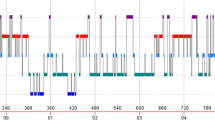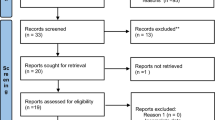Abstract
Objective
To investigate the effects of electroacupuncture (EA) at acupoints Baihui (GV 20), Neiguan (PC 6) and Sanyinjiao (SP 6) on the levels of estradiol (E2) and brain-derived neurotrophic factor (BDNF) in serum, as well as the expression of BDNF in hippocampus in chronic depression rat models.
Methods
Thirty female Wistar rats were randomly divided into three groups, including a normal control (NC) group, a model group and an EA group, 10 rats in each group. The depression model was established by using chronic unpredicted mild stress (CUMS), such as cold-water swimming, tail clamping, electric shock to foot, etc., combined with individual caging for 21 d. Rats in the model group and EA group were randomly exposed to one of the 9 stressors each day and caged individually. After modeling, rats in the EA group were then treated with EA at Baihui (GV 20), Neiguan (PC 6) and Sanyinjiao (SP 6) once daily for 14 d, and the model group was not treated with EA but bounded in the same way as the EA group. Serum E2 was measured by radioimmunoassay and BDNF was assessed by an enzyme-linked immunosorbent assay (ELISA) and the expression of BDNF in hippocampus was detected by using immunohistochemistry.
Results
After the stress stimulation, compared with the NC group, the model group and EA group showed a significant reduction of sucrose preference rate (P<0.01) and remarkable increase of forced-swimming immobility time (P<0.01). In addition, EA significantly reduced the depression-like behavior of rats in the EA group (P<0.01). The expressions of E2 and BDNF in serum as well as the expression of BDNF in hippocampus were remarkably lower in the model rats than those in the NC group (P<0.01, P<0.01, P<0.05). The expression of BDNF in rats’ serum and hippocampus in the EA group was significantly higher than that in the model group (P<0.05), while serum E2 increased but insignificantly (P>0.05).
Conclusion
E2 and BDNF may contribute to the depression-like behaviors of the rats during CUMS period. EA may exert its anti-depression effects through promoting BDNF expression in serum and hippocampus.
摘要
目的
探讨电针百会、内关和三阴交穴对慢性抑郁模型大鼠血清雌二醇(estradiol, E2)和脑源性神经营养因子(brain-derived neurotrophic factor, BDNF)水平及海马区BDNF 表达的影响。
方法
将 30 只雌性Wistar 大鼠随机分为三组, 包括正常对照组, 模型组和电针组, 每组10 只。采用慢性E2D;等程度不可预见性刺激(chronicunpredicted mild stress, CUMS, 如冷水游泳、夹尾、电击足底等)结合孤养21 d 造模。模型组和电针组大鼠每天随机应用9 种不同的刺激结合孤养。造模结束后, 电针组给予电针百会、内关、三阴交治疗, 每天一次, 共14 d;模型组给予同等程度束缚。血清E2 用放免法检测, 血清BDNF 用酶联免疫吸附试验法(enzyme-linkedimmunosorbent assay, ELISA)检测, 海马BDNF 的表达用免疫组化法。
结果
应激结束后, 与正常对照组比较, 模型组和电针组糖水偏爱率显著下降(P<0.01), 强迫游泳不动时间显著增加(P<0.01)。此外, 电针显著减少了大鼠的抑郁样行为(P<0.01)。与正常对照组比较, 模型组血清E2、BDNF 水平及海马区BDNF 的表达显著下降 (P<0.01,P<0.01, P<0.05)。与模型组比较, 电针组血清BDNF 和海马区BDNF 表达显著增加(P<0.05), 血清E2 水平增加但差异无显著性 (P>0.05)。
结论
E2 和BDNF 可能与慢性轻度不可预见性应激大鼠抑郁样行为有关。电针可能通过增加血清和海马BDNF 的表达发挥抗抑郁作用。
Similar content being viewed by others
References
Sen S, Duman R, Sanacora G. Serum BDNF, depression and anti-depressant medications: meta-analyses and implications. Biol Psychiatry, 2008, 64(6): 527–532.
Luo Y, Zheng LZ, Zhou JW. Research on relationship between post partum depression and plasma estrogen, monoamine concentration. Zhonghua Fuchanke Zazhi, 2007, 42(11): 745–748.
Lee HY, Kim YK. Plasma brain-derived neurotrophic factor as a peripheral marker for the action mechanism of antidepressants. Neuropsychobiology, 2008, 57(4):194–199.
Freeman EW, Sammel MD, Lin H, Nelson DB. Associations of hormones and menopausal status with depressed mood in women with no history of depression. Arch Gen Psychiatry, 2006, 63(4): 375–382.
Walf AA, Frye CA. Administration of estrogen receptor beta-specific selective estrogen receptor modulators to the hippocampus decrease anxiety and depressive behavior of ovariectomized rats. Pharmacol Biochem Behav, 2007, 86(2): 407–414.
Sato K, Akaishi T, Matsuki N, Ohno Y, Nakazawa K. Beta-estradiol induces synaptogenesis in the hippocampus by enhancing brain-derived neurotrophic factor release from dentate gyrus granule cells. Brain Res, 2007, 1150: 108–120.
Kim H, Park HJ, Han SM, Ohno Y, Nakazawa K. The effects of acupuncture stimulation at PC 6 (Neiguan) on chronic mild stress-induced biochemical and behavioral responses. Neurosci Lett, 2009, 460(1): 56–60.
Duan DM, Tu Y, Chen LP. Efficacy evaluation for depression with somatic symptoms treated by electroacupuncture combined with Fluoxetine. Zhongyiyao Zazhi, 2009, 29(3): 167–173.
Willner P. Validity, reliability and utility of the chronic mild stress model of depression: a 10-year review and evaluation. Psychopharmacology (Berl), 1997, 134 (4): 319–329.
Sarkisova KY, Kulikov MA. Prophylactic actions of the antioxidant agent AEKOL on behavioral (psychoemotional) disturbances induced by chronic stress in rats. Neurosci Behav Physiol, 2001, 31(5): 503–508.
Rot M, Mathew SJ, Charney DS. Neurobiological mechanisms in major depressive disorder. CMAJ. 2009, 180(3): 305–313.
Murua VS, Gomez RA, Andrea ME, Molina VA. Shuttle-box deficits induced by chronic variable stress: reversal by imipramine administration. Pharmacol Biochem Behav, 1991, 38(1): 125–130.
Jia BH, Li ZG, Lu J. Research on model choice for analyzing the effect of electroacupuncture in antidepression. Zhen Ci Yan Jiu, 2005, 30(1): 23–25.
Li Y, Ji YJ, Jiang H. Effects of unpredictable chronic stress on behavior and brain-derived neurotrophic factor expression in CA3 subfield and dentate gyrus of the hippocampus in different aged rats. Chin Med J, 2009, 122(13): 1564–1569.
Zheng H, Liu YY, Li W, Yang B, Chen D, Wang X, Jiang Z, Wang H, Wang Z, Cornelisson G, Halberg F. Beneficial effects of exercise and its molecular mechanisms on depression in rats. Behav Brain Res, 2006, 168(1): 47–55.
Scharfman HE, MacLusky NJ. Estrogen and brain-derived neurotrophic factor (BDNF) in hippocampus: complexity of steroid hormone-growth factor interactions in the adult CNS. Front Neuroendocrinol, 2006, 27(4): 415–435.
Gourley SL, Kiraly DD, Howell JL, Olausson P, Taylor JR. Acute hippocampal BDNF restores motivational and forced swim performance after corticosterone. Biol Psychiatry, 2008, 64(10): 884–890.
Karege F, Schwald M, Cisse M. Postnatal developmental profile of brain-derived neurotrophic factor in rat brain and platelets. Neurosci Lett, 2002, 328(3): 261–264.
Author information
Authors and Affiliations
Corresponding author
Rights and permissions
About this article
Cite this article
Mu, Dz., Huang, X. Anti-depression effects of electroacupuncture through up-regulating serum E2 and BDNF and expression of BDNF in hippocampus in chronic depression rats. J. Acupunct. Tuina. Sci. 13, 141–145 (2015). https://doi.org/10.1007/s11726-015-0838-6
Received:
Accepted:
Published:
Issue Date:
DOI: https://doi.org/10.1007/s11726-015-0838-6
Keywords
- Acupuncture Therapy
- Electroacupuncture
- Depression
- Hippocampus
- Brain-derived Neurotrophic Factor
- Estradiol
- Rats




